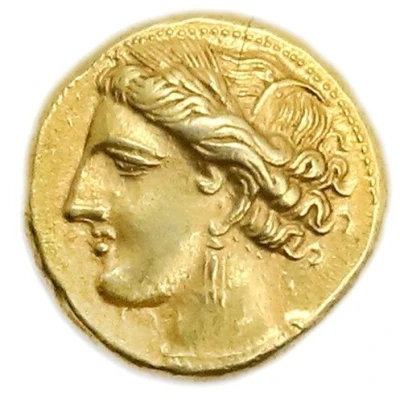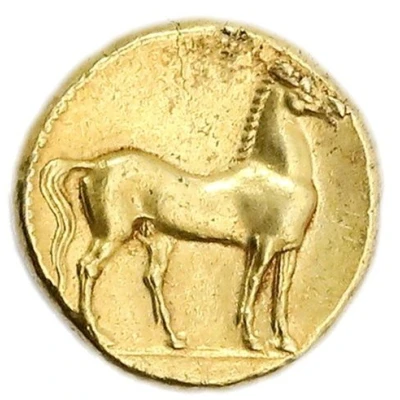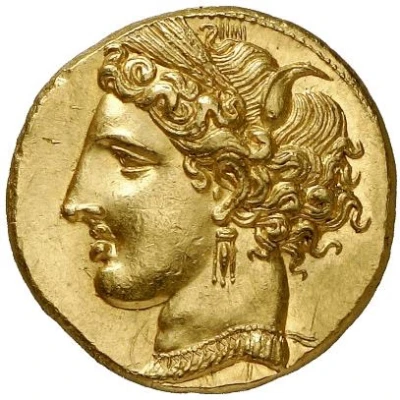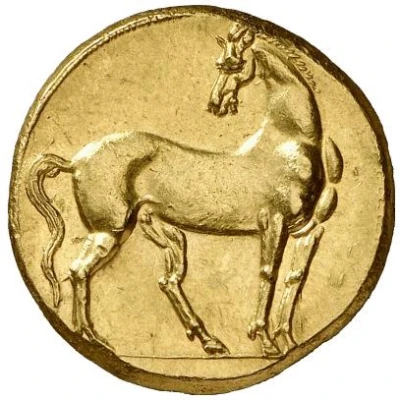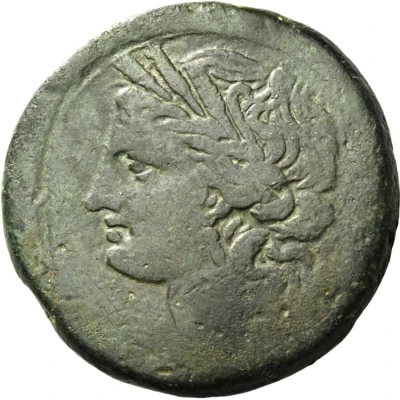
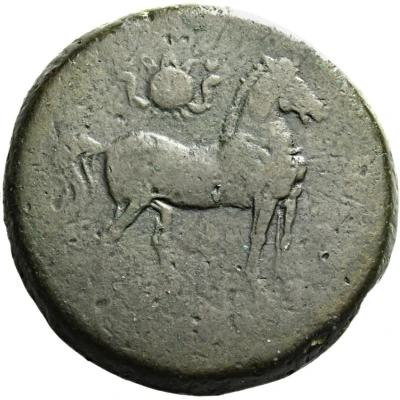

© Numismatica Ars Classica NAC AG
15 Shekel 201 BC - 195 BC
| Bronze | 93.95 g | 46 mm |
| Issuer | Carthage (Zeugitana) |
|---|---|
| Type | Standard circulation coin |
| Years | 201 BC - 195 BC |
| Value | 15 Shekel |
| Currency | Shekel |
| Composition | Bronze |
| Weight | 93.95 g |
| Diameter | 46 mm |
| Shape | Round (irregular) |
| Technique | Hammered |
| Demonetized | Yes |
| Updated | 2024-10-09 |
| Numista | N#194492 |
|---|---|
| Rarity index | 100% |
Reverse
Unbridled horse standing right. Sun disk above.
Comment
Following the battle of Zama, where Carthage was defeated by Scipio, Carthage was ordered to pay a war indemnity of 10,000 talents of silver (the equivalent of about 660,000 pounds). The cost of peace was high indeed. The indemnity bankrupted the Carthaginian treasury and the disbanding of the army left Punic territory in North Africa at the mercy of the Numidians, who began plundering raids almost immediately.In the context of this unmitigated economic disaster, Carthage began to produce a heavy token bronze coinage to stand in for the traditional silver coinage that it could no longer afford to produce. The present coin is a bronze shekel probably struck immediately after the collapse of the Carthaginian economy. Its quality as an emergency issue is indicated by the unprecedented size and weight (matched in the Greek world only by certain Ptolemaic bronzes) and the use of very few dies. It was probably struck alongside a smaller fraction for only a short period.The reverse features the longstanding horse emblem of Carthage. It is associated with the city's foundation myth. According to Vergil's Aenead, while searching for a good site for Carthage, the Tyrian princess Dido ordered the excavation of a hill in Libya. When the excavators dug up the head of a horse it was seen as an omen that a city built there would be powerful in war. Thus Carthage was sited on the spot where the head was found. It is more than a little ironic that a symbol advertising martial prowess should still appear on an emergency coinage produced in the context of military defeat. (source: Numismatica Ars Classica Auction 110 catalog)
Interesting fact
The 15 Shekel coin from Carthage (Zeugitana) was used as a form of currency during a time of great economic and cultural significance for the ancient city-state. Carthage was a major power in the Mediterranean region, known for its advanced agriculture, trade networks, and military prowess. The coin's design, which features a stylized image of a horse and rider, reflects the importance of horse breeding and trading in Carthage's economy. The coin's bronze composition also highlights the city's access to natural resources and its advanced metalworking techniques. Overall, the 15 Shekel coin serves as a tangible reminder of Carthage's rich history and cultural achievements.
